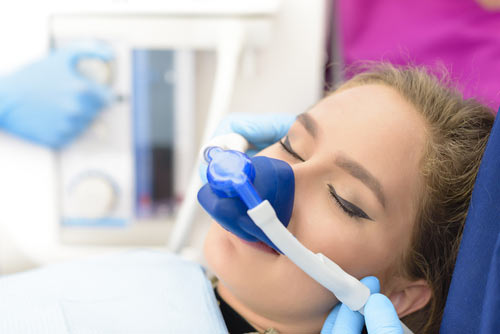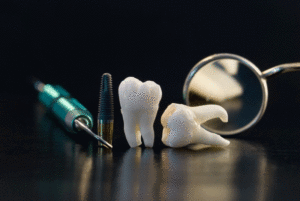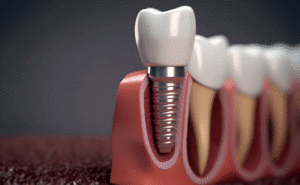While seeing the dentist at least once every six months is an essential and key aspect to good oral health care, it goes without saying that people approach visits in different ways. In other words, while a visit to the dentist might not be a big deal to one person, it can invoke anxiety and fear in others. The good news is that it’s possible – and safe – for even the most anxious patient to get the dental care they need thanks to anesthesia and sedation. Here’s a closer look:
Anesthesia 101
Anesthesia can help numb areas of the mouth and calm an overly anxious patient worried about pain. Local anesthesia, for instance, is commonly used to numb a certain part of the mouth, typically where any potentially uncomfortable dental work may be carried out. Local anesthesia just numbs – it doesn’t cause the patient to sleep – and it typically goes away in a few hours.
General anesthesia is the other major type of anesthesia. It’s administered via injection into the vein, and puts patients to sleep. It’s generally used for more extensive dental work, like wisdom teeth removal.
Sedation 101
There are a few types of sedation techniques that dentists can use on qualifying patients. Though sedation is often used to keep patients comfortable during more intensive procedures, it can also be administered on nervous or anxious patients. Common types of sedation include:
Watch our video about sedation dentistry
- Enteral sedation: This involves taking a pill or drinking a liquid, and it is used to reduce feelings of nervousness. It’s often used in conjunction with nitrous oxide, otherwise known as laughing gas.
- Laughing gas: Also known as nitrous oxide, this helps alleviate pain without putting the patient to sleep. It’s the most common type of sedation method used in dental offices. In addition to alleviating pain, it reduces anxiety.
- IV sedation: As the name implies, this involves administering a sedative through a vein. It’s a deeper type of sedation, but it won’t put the patient to sleep. Because it’s injected, there’s a more extensive recovery time.
Learn more about who needs sedation at the dentist
Is Anesthesia and Sedation Safe?
In a nutshell, yes. Dentists have been practicing using anesthesia and sedation for decades. In order to be able to offer such, however, offices have to be qualified. For instance, in order to provide sedation, dental offices need to possess a sedation license, which shows they’ve completed the necessary training and acquired the right equipment.
As is the case with any procedure or treatment, there are some risk factors associated with anesthesia and sedation. Largely, however, these side effects are minor and very rare.
For more information on anesthesia and sedation practices, contact Caven Dental today.



